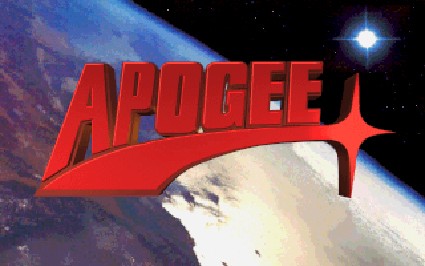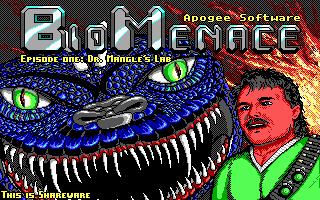
Apogee – A History
In the 1990’s, PC gaming was dominated by a company called Apogee Software Ltd. Creators and publishers of such series as Duke Nukem, Commander Keen, DOOM, and Death Rally, Apogee dominated with an innovative varied shareware distribution method from the late 1980’s, and into the 1990’s.
So what happened to Apogee games? What are they doing now? Read on dear readers, for the answers lie below!
In 1987, Apogee Software Ltd. was founded by Scott Miller. Miller, who had been programming games since 1975, initially launched his game Kingdom of Kroz under the Apogee moniker. With this release, so began Apogee’s innovative varied shareware distribution model. Traditionally, shareware distribution sees the software creator giving away their product for free, whilst taking donations from users. Software would usually include information on how to send the creator money, etc. so that they could continue to create. However, Apogee decided to adopt a unique variation of this model which has been since dubbed the Apogee Model.
The Apogee Model was essentially an episodic distribution model. Games would be broken up into several episodes, with the first episode usually being free. The idea was that if you downloaded “Duke Nukem – Episode 1: Shrapnel City” from a Bulletin Board System (yes, Apogee pioneered early electronic distribution), you would hopefully be willing to give Apogee money to receive the remaining episodes via postal mail distribution. Apogee would later expand into traditional retail channels, bringing their unique model there. One could walk into Walmart, buy the first episode of a series for a small amount (if memory serves me correctly, I believe I was buying them for around $10.), and then eventually order the remaining episodes directly from Apogee. Discounts were also provided if you bought all the episodes together.
As Apogee grew, they had a string of massive hits such as Wolfenstein 3D, Duke Nukem, Commander Keen, etc. However, as their success grew, the company began to become somewhat unstable. As 3D games became much more prevalent over their 2D counterparts, Apogee decided to create sub-brands for their releases so that they could target market specific audiences. This led to the creation of the 3D Realms brand, which focused on 3D games, and the Pinball Wizards label, which was only ever used on the Balls of Steel pinball PC game. The idea was that if you saw the 3D Realms logo, you would realize immediately you were buying a game with a 3D engine. Eventually though, as 3D games eventually dominated the industry, Apogee changed their name to 3D Realms to better give sense of their products.
With this name change however, came turmoil. The studio, seemingly perplexed on how to duplicate the success of 1996’s Duke Nukem 3D (published under the 3D Realms name), only successfully developed a handful of games over the next decade. They went from being an innovative, successful PC game developer/publisher, to the kings of vaporware. Their game Prey was finally released in 2006, after being in development for eleven years, though it had to be eventually given to a third-party studio for completion. Most of their other time was seemingly spent on the follow up to Duke Nukem 3D; Duke Nukem Forever. Eventually, the studio would be shut down in 2009 due to lack of remaining money. Duke Nukem: Forever, which began development in 1996, was finally given to Gearbox Entertainment in 2010, by publishing-rights holders Take-Two Interactive, to finish. It was met with overwhelmingly negative reviews the following year.
So there we have it. Apogee began its life as a successfully, innovative company, only to succumb to the trappings of its own success. In the immortal words of Duke Nukem: “Hail to the king, baby.”


